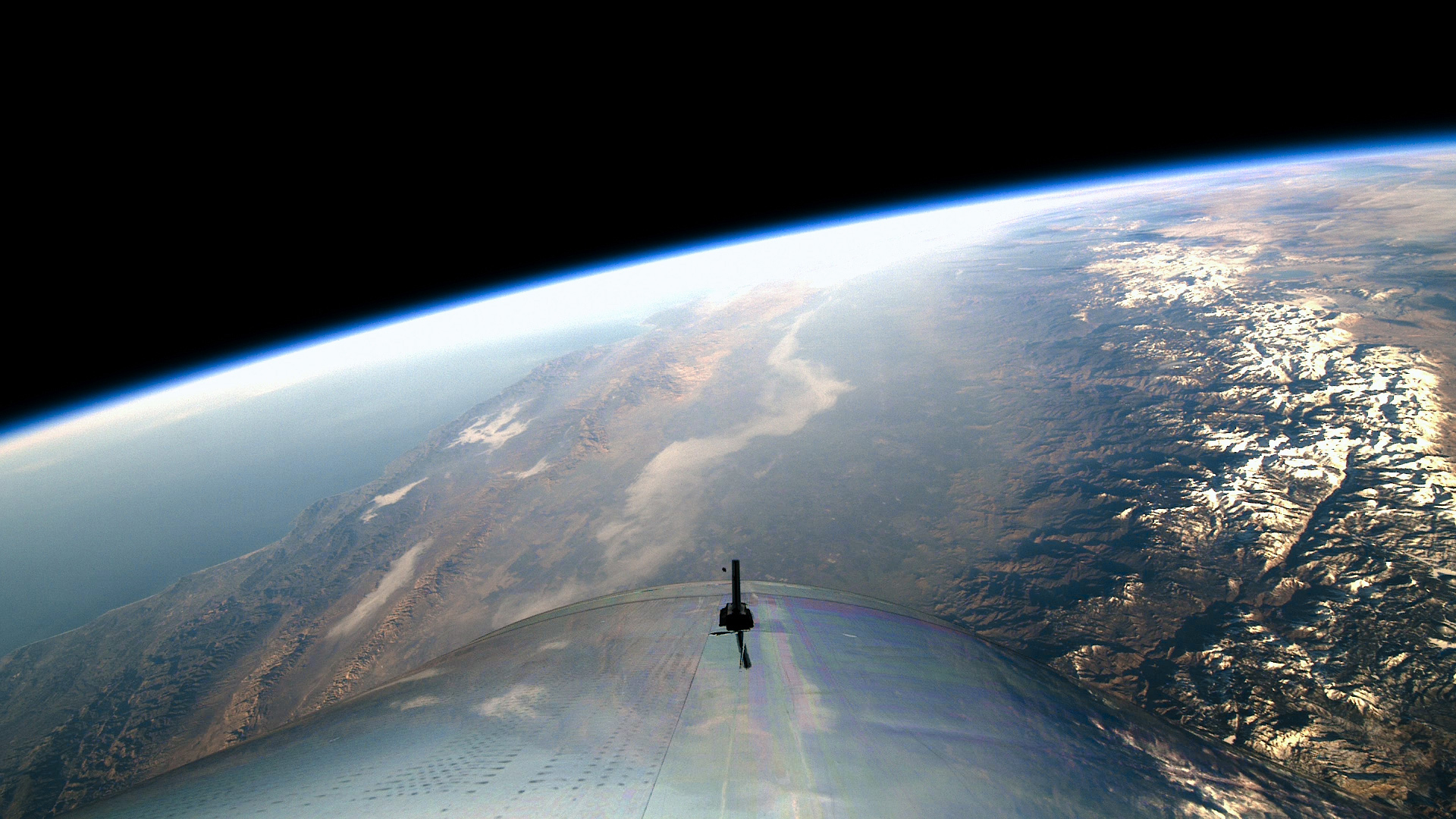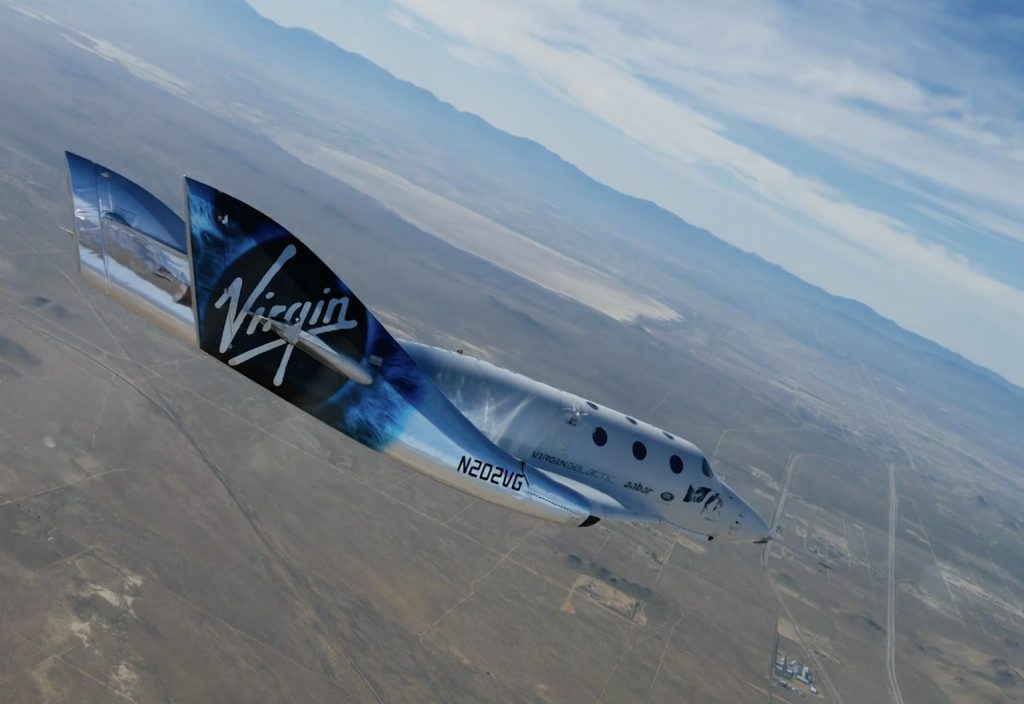Last week, Virgin Galactic’s VSS Unity soared to a peak altitude over 80 km – earning its pilots astronaut wings and bringing more than 600 ticket holders closer to their dream.
The SpaceShipTwo craft’s latest test flight broke its previous altitude record of 52 km, which it achieved in July. It is yet to match the benchmark set by its predecessor, the prototype vehicle SpaceShipOne, which won the US$10 million Ansari XPRIZE after smashing the 100 km barrier in 2004.
Nonetheless, Virgin founder Richard Branson felt joy, relief and exhilaration at the latest milestone, which he claimed was the first time a crewed spaceship built to carry private passengers had reached space.
“This is a momentous day and I could not be more proud of our teams who together have opened a new chapter of space exploration,” said Branson in a media release.
And the vehicle is not just benefiting would-be private astro-trippers. On this mission, VSS Unity carried Virgin Galactic’s first commercial payload – four experiments from the NASA Flight Opportunities Program. These include a vibration isolation platform, a system to separate gas and liquids in microgravity, and a biological imaging experiment to research whether future deep space astronauts could grow their own food.

Also aboard was an experiment to test the effect of space dust on an asteroid or moon landing. According to NASA Flight Opportunity campaign manager Ryan Dibley, adding SpaceShipTwo to the growing list of commercial vehicles supporting suborbital research was exciting.
“Inexpensive access to suborbital space greatly benefits the technology research and broader spaceflight communities,” Dibley explained.
Birds of a feather
VSS Unity zoomed through the atmosphere at Mach 2.5 before returning to Earth. Virgin Galactic has incorporated an innovative design feature, known as ‘feathering’, to enable safe re-entry. This feature was first tested on SpaceShipOne in 2004.
Feathering allows the spacecraft to change its shape to control the rate and stability of its downward flight. This is achieved by rotating its wings and tail booms into an upward-facing position as it descends.
Virgin Galactic compares the feathering configuration to a badminton shuttlecock or ‘birdie’, and states that it combines the advantages of both a winged vehicle and a capsule. If the vehicle re-enters at a non-ideal angle, aerodynamic forces will ‘flip’ it around to enter belly first. This spreads the heat caused by friction over the entire lower surface area and slows the craft to a safe speed. When the atmosphere thickens, the wings are folded down and SpaceShipTwo glides to its landing field.
How high is space?
Virgin Galactic was quick to congratulate VSS Unity, tweeting the message “SpaceShipTwo, welcome to space”. But although the crew has been recognised by NASA and the US Federal Aviation Administration (FAA) as astronauts, other authorities beg to differ.
The NASA and FAA draw the boundary between the atmosphere and space at an altitude of 50 miles (just over 80 km). On the other hand, international standards group the Fédération Aéronautique Internationale (FAI) sets it at 100 km, or the Karman line. Above this point, the atmosphere is so thin that aerodynamic flight principles no longer apply.
While SpaceShipOne has reached this height, SpaceShipTwo has not.
Whatever definition you choose, SpaceShipTwo’s latest campaign has added weight to the private sector’s growing domination of space.
According to Virgin Galactic CEO George Whitesides, the flight provides more evidence that commercial space flight will become one of the 21st century’s defining industries.
“Reusable vehicles built and operated by private companies are about to transform our business and personal lives in ways which are as yet hard to imagine,” he said.
